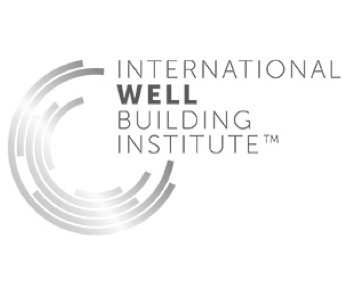Making investments in Health and Well-being

Many leading global businesses would regard the introduction of well-being initiatives as a normal element of their high operating standards, with leading financial institutions and the tech giants setting the standards. Flexible working space, engaging environments and readily available quality nutritious food are the norm in Silicon Valley and are increasingly features of workspaces across the corporate offices of the tech businesses and in major financial centers. However, these standards are far less prevalent outside of these areas and making investments in wellbeing is a challenge for cost-constrained business streams such as regional offices and warehousing.
Is there value for businesses and real asset investors in introducing well-being initiatives and facilitating well-being initiatives through developing real assets that are designed for higher well-being standards?
At the highest level of business, the case has been made that well-being initiatives can pay off. Specifically, a study from London Business School suggests that companies with high levels of well-being outperform the stock market by 2-3% per year, and research from Business in the Community (BITC) shows that FTSE 100 companies are demonstrating best practice in employee health and well-being, showing a higher-than-average shareholder return of 61% instead of 51%.
Across the global players, HR departments are working with Environment, Health and Safety (EHS) and Sustainability teams to create working environments and policies that attract and retain the best people and improve productivity and creativeness. “Within the tech industry, talent is the greatest asset, and health and well-being programs are now being promoted as part of the perks offered by the tech giants to recruit and retain the best talent”, says Peylina Chu, VP of Antea Group and Tech Segment Leader. With the well documented ‘war for talent’ extending outside of the major tech hubs into all parts of business and translating into a labour challenge across all sectors, notably in the growing warehousing sector, it would be a natural step to assume that what works in retaining talent in FTSE 100 giants will also work for the rest of the workforce.

For the owners of real assets, attracting and retaining the highest quality occupiers is good business, and providing workspace that enables businesses to promote the best employee well-being is a key part of that.
Health and well-being initiatives can be viewed from two perspectives:
- From a real asset perspective
- From an employee programme perspective
These perspectives are complementary and both are important. We dive into some of the details in the following sections.
Making investments in Health and Well-being
November 7, 2018 By Inogen Environmental Alliance Inc
Many leading global businesses would regard the introduction of well-being initiatives as a normal element of their high operating standards, with leading financial institutions and the tech giants setting the standards. Flexible working space, engaging environments and readily available quality nutritious food are the norm in Silicon Valley and are increasingly features of workspaces across the corporate offices of the tech businesses and in major financial centers. However, these standards are far less prevalent outside of these areas and making investments in wellbeing is a challenge for cost-constrained business streams such as regional offices and warehousing.
Is there value for businesses and real asset investors in introducing well-being initiatives and facilitating well-being initiatives through developing real assets that are designed for higher well-being standards?
At the highest level of business, the case has been made that well-being initiatives can pay off. Specifically, a study from London Business School suggests that companies with high levels of well-being outperform the stock market by 2-3% per year, and research from Business in the Community (BITC) shows that FTSE 100 companies are demonstrating best practice in employee health and well-being, showing a higher-than-average shareholder return of 61% instead of 51%.
Across the global players, HR departments are working with Environment, Health and Safety (EHS) and Sustainability teams to create working environments and policies that attract and retain the best people and improve productivity and creativeness. “Within the tech industry, talent is the greatest asset, and health and well-being programs are now being promoted as part of the perks offered by the tech giants to recruit and retain the best talent”, says Peylina Chu, VP of Antea Group and Tech Segment Leader. With the well documented ‘war for talent’ extending outside of the major tech hubs into all parts of business and translating into a labour challenge across all sectors, notably in the growing warehousing sector, it would be a natural step to assume that what works in retaining talent in FTSE 100 giants will also work for the rest of the workforce.
For the owners of real assets, attracting and retaining the highest quality occupiers is good business, and providing workspace that enables businesses to promote the best employee well-being is a key part of that.
Health and well-being initiatives can be viewed from two perspectives:
- From a real asset perspective
- From an employee programme perspective
These perspectives are complementary and both are important. We dive into some of the details in the following sections.
How can health and wellbeing initiatives be integrated into real assets?
Health and well-being at work is a shared responsibility between an individual and their employer, and while each workplace is different, there are a lot of common real asset characteristics that can create a healthy work environment for staff. Developers, occupiers and investors are embracing the health and wellbeing concept, with initiatives introduced such as creating spaces that encourage physical activity, installing lighting that supports people’s natural circadian rhythms, improving access to nature and providing areas for healthy eating.
A well-being real asset assessment can be carried out on an individual building or department of any type and scale, or across the full range of an organization’s operations. Following the assessment, health and well-being policies can be used to promote the well-being of teams with supporting documentation and metrics to demonstrate a company’s commitment to well-being in the workplace.
For those wishing to go one step further, there are formal well-being certifications for real assets.
The WELL Building Standard, launched in 2014 by the International Well Building Institute (IWBI), has played a part in placing the wellness concept firmly on landlords’ and occupiers’ agendas focussing on detailed assessment of a number of criteria including air, light, mind and water.

Fitwel is operated by the Center for Active Design (CfAD) and encourages evidence-based design and operational strategies that enhance building environments by addressing a broad range of health behaviours through specific, incremental changes.
Developing employee health and well-being programmes
Companies who wish to improve health and well-being in the workplace can undertake a well-being assessment. This examines a company’s Environmental, Social Governance (ESG) policy, and provides a review of existing initiatives with particular focus on building operation and management and employee needs, proposing actions to improve health and well-being outcomes. Specific topics of interest can be focused on to provide a tailored approach for the individual client operations and the roles of team members working in various business environments, from office, to warehouse to manufacturing space. Employee surveys can be very useful to identify areas of work/life stress and custom-tailor health and wellbeing programs to specific areas. Initiatives can be tailored to specific aspects of the physical workplace, such as walking challenges designed to take advantage of a real asset’s access to nature. Other initiatives can be unrelated to the physical workplace and address common employee concerns, such as financial wellbeing, sleep challenges, and child-rearing.
To ensure the implementation of a company’s well-being initiative is successful, some key elements need to be considered:
- The programme is designed to meet employees’ needs and values.
- Senior management buy-in, not just through endorsement but through visible participation.
- The initiative needs to be aligned to the overall aims and goals of the business.
- Good communication, both in terms of employees being informed and updated on initiatives.
- A means of measuring the outcomes and business benefits.
This article is written by Alex Ferguson, Managing Director – Delta-Simons/Inogen
